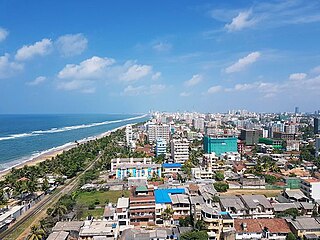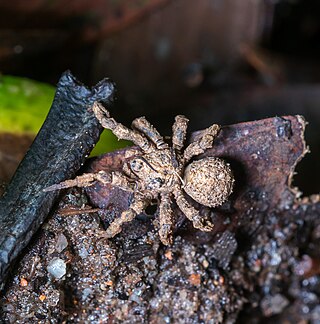
Dehiwala-Mount Lavinia, population 245,974 (2012), is a large municipality in Sri lanka, and covers an extent of 2,109 ha. It lies south of the Colombo Municipal Council area and separated from it by the Dehiwala canal which forms the northern boundary of DMMC. Its southern limits lie in Borupana Road and the eastern boundary is Weras Ganga with its canal system and including some areas to its east. This town has extensive population and rapid industrialisation and urbanization in recent years. It is home to Sri Lanka's National Zoological Gardens, which remains one of Asia's largest. Colombo South Teaching Hospital, Kalubowila and Colombo Airport, Ratmalana are some important landmark in this area. Dehiwela-Mount Lavinia and Sri Jayawardenapura Kotte being two large suburban centres of the city of Colombo function together as one large urban agglomeration in the Region. The overspill from the City in residential and commercial uses of land have rapidly urbanised these suburban centers. Dehiwela-Mount Lavinia and Sri Jayawardenpaura along with Colombo Municipal Council form the most urbanised part of the core area of the Colombo Metropolitan Region. Dehiwala and Mount Lavinia lie along the Galle Road artery, which runs along the coast to the south of the country.

Onomastus is a genus of Asian jumping spiders that was first described by Eugène Louis Simon in 1900. It is the only genus in the subfamily Onomastinae.
Panachraesta is a monotypic genus of Sri Lankan jumping spiders containing the single species, Panachraesta paludosa. It was first described by Eugène Louis Simon in 1900, and is only found in Sri Lanka. Until 2016, it was a synonym of Myrmarachne.

Pancorius is a genus of Asian jumping spiders that was first described by Eugène Louis Simon in 1902. They are similar to Hyllus.

Cryptothele is a spider genus with 10 described species, now placed in the family Zodariidae.

Poecilotheria is a genus of tarantulas native to India and Sri Lanka. It was first described by Eugène Louis Simon in 1885. They are arboreal tarantulas, commonly known as ornamental tarantulas, known for their vivid color patterns, fast movement, and potent venom compared to other tarantulas. As of 2019 all species are protected under CITES.
The wildlife of Sri Lanka includes its flora and fauna and their natural habitats. Sri Lanka has one of the highest rates of biological endemism.
Poecilotheria hanumavilasumica, also known as the Rameshwaram ornamental, or Rameshwaram parachute spider, is a critically endangered species of tarantula.
Oedignatha is a genus of Asian spiders first described by Tamerlan Thorell in 1881 as a genus of corinnid sac spiders, and moved to Liocranidae in 2014.
Hermippus is a genus of ant eating spiders in the family Zodariidae, containing twelve species restricted to Asia and parts of Africa. Three new species were discovered in 2014.
Suffasia is a genus of ant spiders in the family Zodariidae, containing eight species restricted to India, Nepal, and Sri Lanka.
Suffasia mahasumana, is a species of spider of the genus Suffasia. It is endemic to Sri Lanka.
Wanniyala is a genus of cellar spiders native to Sri Lanka, first described by Huber & Benjamin in 2005. They have six eyes and four pair of legs and grow up to 2 mm in length. The abdomen is globular and males have a distinctive distal hinged sclerite on the procursus of genitalia. The name is derived from the Sri Lankans native to the island that the first spiders were found on- the Vedda people- and their surname Wanniyala-Aetto.
Epidius is a genus of crab spiders that was first described by Tamerlan Thorell in 1877. It is a senior synonym of Pothaeus.
Bavirecta is a genus of Asian jumping spiders first described by N. Kanesharatnam & Suresh P. Benjamin in 2018. As of April 2019 it contains only two species. It was placed in the tribe Baviini, part of the clade Salticoida of the subfamily Salticinae.
Colopsus is a genus of Asian jumping spiders first described by Eugène Louis Simon in 1902. It was synonymized with Evarcha in 1984, but the name was revalidated in 2021. It is a senior synonym of Cheliceroides.
Orientattus is a genus of Asian jumping spiders erected by John Caleb in 2020. It is placed in the tribe Plexippini, within the Salticoida clade of Salticinae. In 2018 and 2019, a species found in Sri Lanka and India was placed in the otherwise African genus Schenkelia under the name "Schenkelia aurantia", however, this species differed significantly from the type species of the genus Schenkelia. Three other species, placed in different genera, were found to resemble Schenkelia aurantia, and these were all combined to create the genus, Orientattus.




